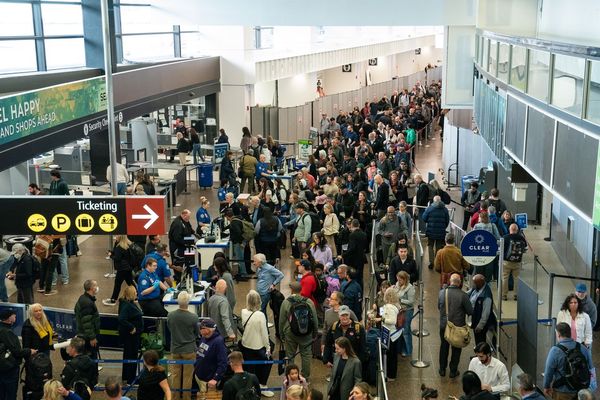Professor Shannon Simpson has survived cancer twice – all before the age of 40.
After receiving treatment for breast cancer in her 20s in Melbourne, Ms Simpson moved to Perth for a job.
Then in 2013, aged 33, she was given the news the cancer had returned – this time in her thigh bone.
But treatment in Perth meant she had to navigate her way between at least eight different medical centres and multiple health professionals.
"I'd already touched on a number of different locations before I even received that diagnosis," she said.
"And once I did, it was sort of a rapid succession of various places around Perth.
That included chemotherapy at St John of God Hospital; surgery at Sir Charles Gairdner Hospital; Hollywood Private Hospital for a particular drug; a separate rehabilitation facility, and X-rays and blood samples taken at various locations across Perth.
Then there was appointment scheduling, keeping track of her test results, documentation and relaying all that information to different specialists.
"I had just moved to Perth and was starting a career. Having all this time off and having to manage appointments on top of that provided a lot of stress," she said.
"[As a doctor] I was in a privileged position in so many ways because I understood the healthcare system from working within it, so I was able to ask questions, and get what I needed."
New centre aims for 'holistic' patient care
Professor Simpson welcomed the Federal Government's funding announcement of a $375 million to a new $750 million comprehensive cancer centre, to be built at the Queen Elizabeth II Medical Centre Campus (QEII) in Nedlands.
Plans for the 10-storey centre include 300 beds and treatment chairs, 140 overnight and inpatient beds, 110 chemotherapy medical beds and chairs, operating theatres, an intensive care unit, pharmacy, medical imaging service and even a gymnasium.
She said it would create a more 'holistic' patient experience.
"It's just so exciting to think, you could go to one place instead of having to manage conflicting appointments that are often scheduled at the exact same time."
The centre would service both public and private patients and have outreach into regional WA, including Indigenous communities and would be based on similar centres in Melbourne and Sydney.
Developed by the Harry Perkins Institute of Medical Research, the overall funding responsibility is expected to be split between the state and federal governments – although the state government has not yet announced its budget commitment.
WA Premier Mark McGowan said his government "welcomed" the commitment but the business case still had to be worked through.
"There's building it, but there's also operating it," he said.
'One stop shop' for cancer treatment
Harry Perkins Institute of Medical Research Director, Professor Peter Leedman said the hospital would provide holistic, "one stop shop" care for cancer patients from the point of diagnosis to palliative care.
"Although the care is excellent in Western Australia, what we don't have is a single centre that provides holistic, one stop shop cancer care for patients and their families," he said.
"And if we're going to make the journey that much easier for our patients and families, this is aided so much by having all of the cancer treatments within one place.
"This facility will radically change the cancer journey for patients with cutting-edge precision medicine driving clinical care.
It would be modelled on similar centres in the eastern states like Peter MacCallum Cancer Centre in Victoria and the Chris O'Brien Lifehouse in New South Wales.
"Across Australia, there's a growing network of comprehensive cancer centres, and we would aim to be a part of that network," Professor Leedman said.
Professor Leedman said there were about 158,000 cancer related admissions to hospital each year, equating 14.4 per cent of total hospital admissions.
"Unfortunately, it's a really big part of medicine, and it's a really big part of our community," he said.
And it's increasing – by 2025 we think it's going to be about 17,000 Western Australians diagnosed with cancer per year.
Cancer researchers 'lured' east
Professor Leedman said new cancer centres and high-quality research facilities in Sydney and Melbourne meant some of the "best and brightest" in the cancer research and medical fields were forced to leave WA.
"We have really great people who have been literally lured over to the eastern states where there are some fantastic centres – we would hope that this would reverse that, for bright young doctors, nurses, physios."
Professor Leedman said another goal was to prevent patients having to seek treatment over east or in other countries with a capacity to treat rare and unusual cancers.
'How can we make this better?'
Professor Simpson said throughout the planning stages of the centre, the Harry Perkins Institute had held focus groups with cancer patients.
"I was really listened to about the patient journey - the good, the bad, and the ugly," she said.
"We really thought 'how can we make this better?' and the kind of things that we had talked about, like having the gym in the cancer centre, have shown up on the final plans."
If funding and construction begin as planned, the facility could be open by 2026.







